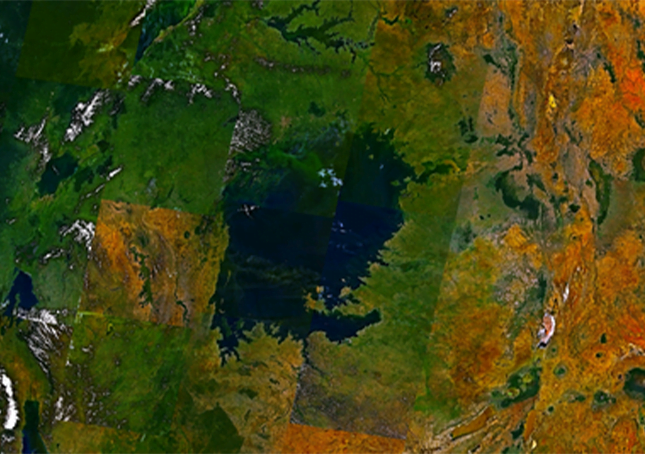Lake Victoria

Lake Victoria (Dholuo: Nam Lolwe; Luganda: Nnalubaale; also Ukerewe) is one of the African Great Lakes.
The lake was renamed after Queen Victoria in the reports of the explorer John Hanning Speke, the first Briton to document it. Speke accomplished this in 1858, while on an expedition with Richard Francis Burton to locate the source of the Nile River. This expedition was financially sponsored by the Royal Geographic Society.
With a surface area of approximately 59,947 km2 (23,146 sq mi), Lake Victoria is Africa’s largest lake by area, the world’s largest tropical lake,[12] and the world’s second-largest fresh water lake by surface area after Lake Superior in North America. In terms of volume, Lake Victoria is the world’s ninth-largest continental lake, containing about 2,424 km3 (1.965×109 acre⋅ft) of water. Lake Victoria occupies a shallow depression in Africa. The lake has a maximum depth of between 80 and 84 m (262 and 276 ft) and an average depth of 40 m (130 ft).
Its catchment area covers 169,858 km2 (65,583 sq mi).[16] The lake has a shoreline of 7,142 km (4,438 mi) when digitized at the 1:25,000 level,[17] with islands constituting 3.7% of this length. The lake’s area is divided among three countries: Kenya occupies 6% (4,100 km2 or 1,600 sq mi), Uganda 45% (31,000 km2 or 12,000 sq mi), and Tanzania 49% (33,700 km2 or 13,000 sq mi).
The lake includes many species of fish that inhabit nowhere else, especially cichlids. Invasive fish, such as the Nile perch, have driven many endemic species to extinction.
Geologically, Lake Victoria is relatively young at about 400,000 years old. It formed when westward-flowing rivers were dammed by an upthrown crustal block.[20] During its geological history, Lake Victoria went through changes ranging from its present shallow depression, through to what may have been a series of much smaller lakes.
Geological cores taken from its bottom show Lake Victoria has dried up completely at least three times since it formed. These drying cycles are probably related to past ice ages, which were times when precipitation declined globally.[20] Lake Victoria last dried out about 17,300 years ago, and it refilled 14,700 years ago as the African humid period began.
